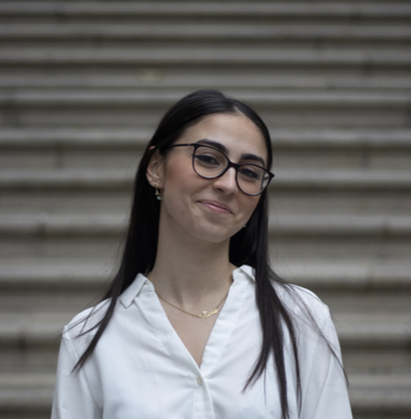|
The assault on cultural heritage during conflict is, universally, a tragedy. This is no more the case than in Aleppo, Syria, a World Heritage city that has been on UNESCO’s List of World Heritage in Danger from 2013. Since political upheaval triggered by the Arab Spring of 2011, over a decade of ongoing civil war has resulted in what the United Nations describes as the worst man-made disaster since 1945, with unparalleled degrees of human suffering. Reasonably, relief organisations and international policymakers target their efforts to ease the humanitarian crisis first and foremost. As a largely unintentional consequence, the destruction of cultural heritage became regarded as a luxury concern that could not be afforded to societies coping with war. This poses a deeper, more fundamental threat to the reconstruction and recovery of the Syrian national identity. With that in mind, this article seeks to argue that cultural heritage, inseparable from identity and security, cannot occupy a peripheral space in the post-conflict reconstruction process.
The destruction of cultural heritage in the country is described by experts like France Desmarais, then-Director at the International Council of Museums, as “the worst-case scenario. [Syria] is the worst situation I’ve ever seen.” The city of Aleppo was an extraordinary crossroads of ancient civilisations, many of which pre-date Islam and Christianity. Conflict in the years 2012-2013 in particular saw many of its treasures ruined. Fire at its labyrinthine souk, for example, resulted in the destruction of over 150 traditional shops. Only months later, the Ayyubid-era entrance to Aleppo’s Citadel, an ancient castle in use for at least 4000 years since 3000 BC, was partially blown up by a missile attack. Still under threat is the Great Umayyad Mosque of Aleppo, which in 2013 tragically lost its minaret. This is not to argue that monuments are everything. For example, across the Middle East as early as the 1948 Nakba, elderly women have often been known to save the keys of their previous homes as cultural artefacts. It is worth bearing this in mind when defining what heritage precisely is, and what it means for those forcibly displaced from their homes and into asylum. The looting and trafficking of historical artefacts is also rampant, but significantly harder to monitor. In a 2014 assessment, the United Nations Institute for Training and Research revealed that 290 Syrian cultural heritage sites have been damaged or destroyed. And as Gulf States like Qatar and the UAE increase their collections of cultural items, the market for stolen goods has grown. Ziad Rajab, custodian of Tareq Rajab Museum of Kuwait, warned of this bleakly: “Today, in this day and age of war and revolution, you have to be really careful about what comes to you privately. … If you loot from an archaeological site, you have destroyed it. The knowledge that comes with how an object was found, what it was found with, where it was found. You have destroyed it.” Appallingly, experts across the board believe the ruination of these sites to be deliberate, an intentional aspect of a wider extremist aim of identity erasure. In 2015, then-UNESCO Director General Irina Bokova referred to the “cultural cleansing” employed by ISIS to mean the destruction of a society through the eradication of its history. John Kerry, then-Secretary of State, also expressed grave concern about the terrorist group’s impact on archaeological sites. Professor Peter Stone, then-Vice President of Blue Shield International, would also agree with these assertions. For him, it was extremism in Mali that presented this pattern: “they had a particular agenda and were destroying antiquities, archives, mosques and tombs that didn’t fit their version of Islam.” These observations are far from misplaced, with the destruction of monuments in Syria being used to eliminate the cultural influences that didn’t fit into an extremist narrative of Islam. Other terms coined by scholars describe a similar process; ‘identicide’ links cultural heritage to national identity, while ‘memoricide’ links it to collective memory. There is a real connection, therefore, between heritage and identity, with huge implications for both individual and collective perception in the future. Identity is a fundamental human need. Individuals, regardless of background, must have a sense of self to grow, and contribute to their local community and society as a whole. This also encompasses the respect and recognition of others and the conception of one’s purpose, none of which can be realised in an environment where history is destroyed, delegitimized, and erased. Understanding and conceptualising heritage through this lens can help to highlight why a religion, community, or individual’s history is so interlinked with its security. Indeed, Laurajane Smith makes the argument that heritage as a concept must be understood more widely as a cultural process, including values like memory, place and psycho-social identity. The loss of historical and cultural sites can also be directly correlated with security. Policymaking efforts must involve, to an extent, a vision for state-building when violence eventually ceases. And perhaps surprisingly, the protection of cultural heritage can do much for post-conflict reconstruction and the fragmentation that often characterises politics in the MENA region. NATO experts, for instance, refer to it as the ‘security-heritage nexus’, where enforcing laws here would act as a force multiplier, lessening violence on innocent civilians as well. The mere existence of historical monuments is a moderating force too, carrying a unique potential to bridge tensions of conflicting religious or tribal groups. The existing response from the international community is definitely a step in the right direction. The 1954 Hague Convention for the Protection of Cultural Property provides a framework of international law, as does the more recent Rome Statute of 2022, which saw the International Criminal Court prosecuting the destruction of cultural heritage as a war crime. International organisations have taken this seriously; in 1996, The Blue Shield was founded with designs to act as the ‘cultural equivalent of the Red Cross’, and the World Monuments Fund (WMF) has invested over $6.5m in Iraq and Syria combined. This is mirrored in efforts to reduce the market for looted items. In 2020, for instance, the EU banned the import of illegally removed antiquities from Syria, while the International Council of Museums and Interpol continue to collect records of known stolen material. This is also promising considering how difficult it is to provide solutions in the midst of ongoing conflict. Indeed, as early as 2002, both the World Monuments Fund and the Aga Khan Trust had to halt respective conservation projects in Syria for precisely this reason. However, initiatives by local actors need significantly more national and international support when it comes to enforcement. In 2014, the Emergency Safeguarding of the Syrian Heritage Project was launched by UNESCO. This resulted in the establishment of an observatory in Beirut, training programmes for customs officers and local experts, and a Paris conference that amplified endangered cultural heritage in Iraq and Syria. In the same year, the American Schools of Oriental Research (ASOR) established the Cultural Heritage Initiatives (CHI) with the US Department of State. The Syrian Heritage Initiative, Syria's Directorate-General of Antiquities and Museums (DGAM), and Kurdish People’s Protection Units are also doing excellent work in reporting and preventing threats to national cultural heritage sites. Therefore, operating on-the-ground in tandem with local actors is an essential lesson for post-conflict reconstruction going forward. Ultimately, the destruction or survival of Syrian cultural heritage is central to its national identity as well as its international security, both of which impact its local population immensely. Because cultural heritage, war, and post-conflict recovery are interlinked this way, it is imperative that the issue be considered central to future policy making efforts. Sultan Barakat sums this up brilliantly: “Just as destruction of cultural property may catalyse conflict, the continuing thread of cultural behaviour and traditions provides the basis for reconciliation and recovery. This should be the central plank in approaches to cultural heritage protection in a post-conflict Syria: unique landmarks and antiquities could be cornerstones of reconciliation, as they have been before, based on pan-Syrianism rather than group-identity.” Of course, the first step to addressing any of this is achieving peace, which is frankly much easier said than done; we can expect this to curtail current efforts in 2023. But we shouldn’t underestimate the power of collective action, the support of international organisations, and the work of knowledgeable local custodians. Indeed, international institutions could raise awareness of the importance of cultural heritage protection, and ensure just and fair prosecution against those who disregard it. Embracing a shared vision for the future, and marrying it with tangible political and financial support, could go a really long way. BIBLIOGRAPHY Barakat, Sultan. 2020. “Necessary Conditions for Integrated Approaches to the Post-Conflict Recovery of Cultural Heritage in the Arab World.” International Journal of Heritage Studies 27 (5): 433–48. https://doi.org/10.1080/13527258.2020.1799061. Cheung, Felix, Amanda Kube, Louis Tay, Edward Diener, Joshua J. Jackson, Richard E. Lucas, Michael Y. Ni, and Gabriel M. Leung. 2020. “The Impact of the Syrian Conflict on Population Well-Being.” Nature Communications 11 (1). https://doi.org/10.1038/s41467-020-17369-0. Cuno, James, and Thomas G Weiss. 2022. “Protecting Cultural Heritage in Ukraine and Beyond.” WSJ. The Wall Street Journal. April 14, 2022. https://www.wsj.com/articles/ukraine-bucha-cultural-heritage-unesco-babyn-yar-maria-prymachenko-irina-bokova-mostar-bridge-bamiyan-buddhas-great-mosque-of-aleppo-hague-convention-1954-blue-shield-monuments-men-rome-statute-2002-11649974297. Dennehy, John. 2014. “Stealing from History: The Looting and Destruction of Iraqi and Syrian Heritage Concern Us All.” The National. The National. December 11, 2014. https://www.thenationalnews.com/arts/stealing-from-history-the-looting-and-destruction-of-iraqi-and-syrian-heritage-concern-us-all-1.308011. Iddon, Paul. 2023. “As the Death Toll Falls and Talks Progress, Could Syria Finally Know Peace in 2023?” Arab News. Arabnews. January 14, 2023. https://www.arabnews.com/node/2232556/middle-east. MUNAWAR, NOUR A. 2019. “COMPETING HERITAGE: CURATING the POST-CONFLICT HERITAGE of ROMAN SYRIA.” Bulletin of the Institute of Classical Studies 62 (1): 142–65. https://doi.org/10.1111/2041-5370.12101. UNESCO. 2018. “Five Years of Conflict - the State of Cultural Heritage in the Ancient City of Aleppo.” Unesco.org. 2018. https://whc.unesco.org/en/activities/946/. World Monuments Fund. 2017. “Cultural Heritage Sites of Syria.” World Monuments Fund. 2017. https://www.wmf.org/project/cultural-heritage-sites-syria.
0 Comments
Leave a Reply. |
Author
Lara is a second year International Relations student at War Studies Department - King's College, London. She researched and wrote this article as part of the BizGees & War Studies Department Internship programme.
|

 RSS Feed
RSS Feed

